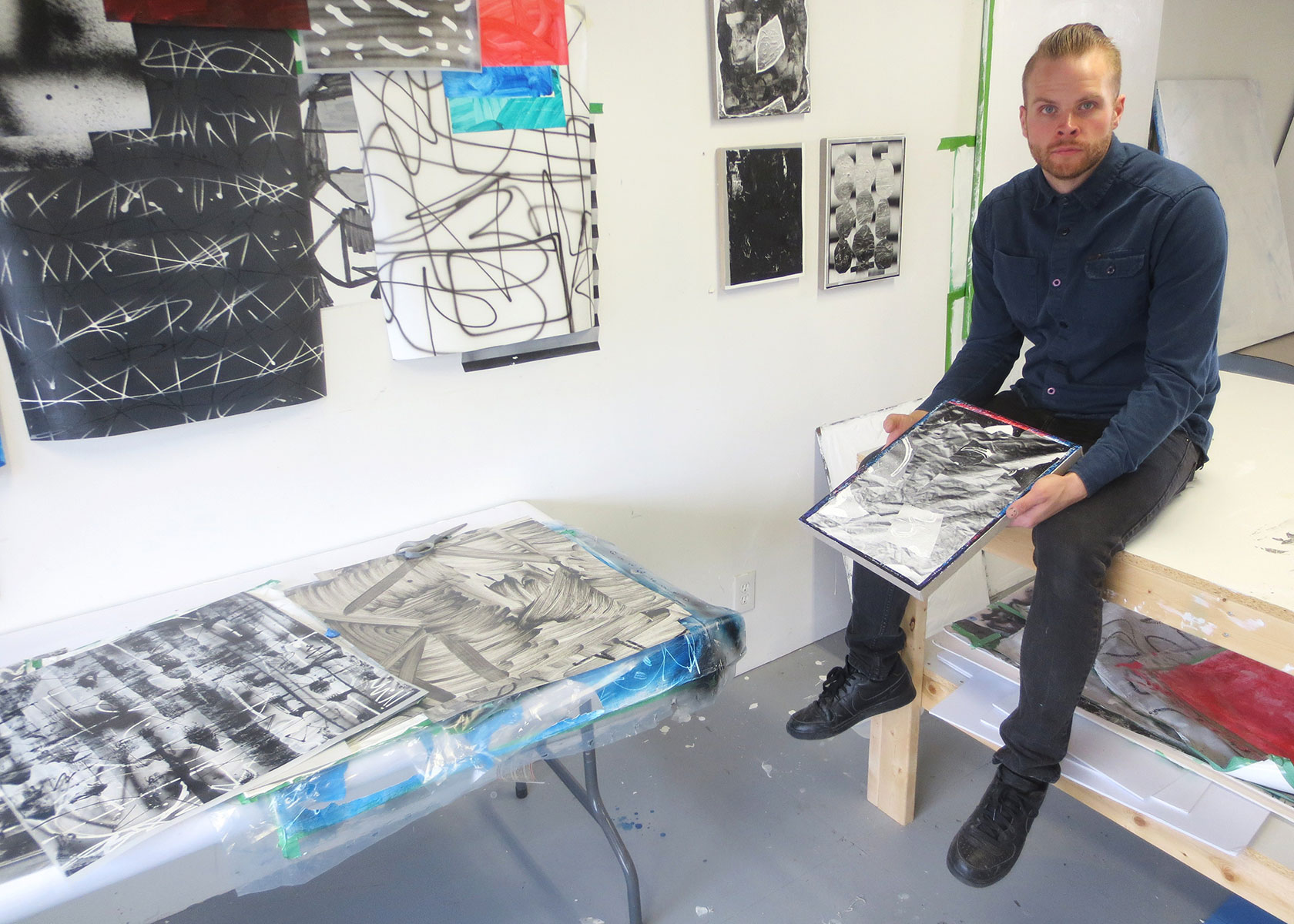
What makes for interesting abstract painting nowadays? Toronto-based Jason Deary’s work provides an opportunity to consider this question. The surfaces of his work do not present us with dull, uniform fields. Rather, the forms he employs are constantly in flux, and a perceptual tension exists between foreground and background. There are also material collusions, ranging from acrylic to spray paint manipulated in unconventional ways on linen, mylar or, really, no surface at all.
Over the past year or so, Deary’s black and white painting-collage hybrids have become recognizable in exhibitions across Canada. Deary, however, is restless, and the work featured in his current show at Katharine Mulherin – his first solo in Toronto – finds him working at a larger scale, with new materials and reintroducing colour to his previously two-toned palette. Like his previous work, however, this suite of paintings maintains a visual cohesion among the individual works despite the artist pushing his painting technique to new levels. Magenta visited with Deary in late November as he was preparing several paintings – “probably more than I’ll really need,” he says – for the show.
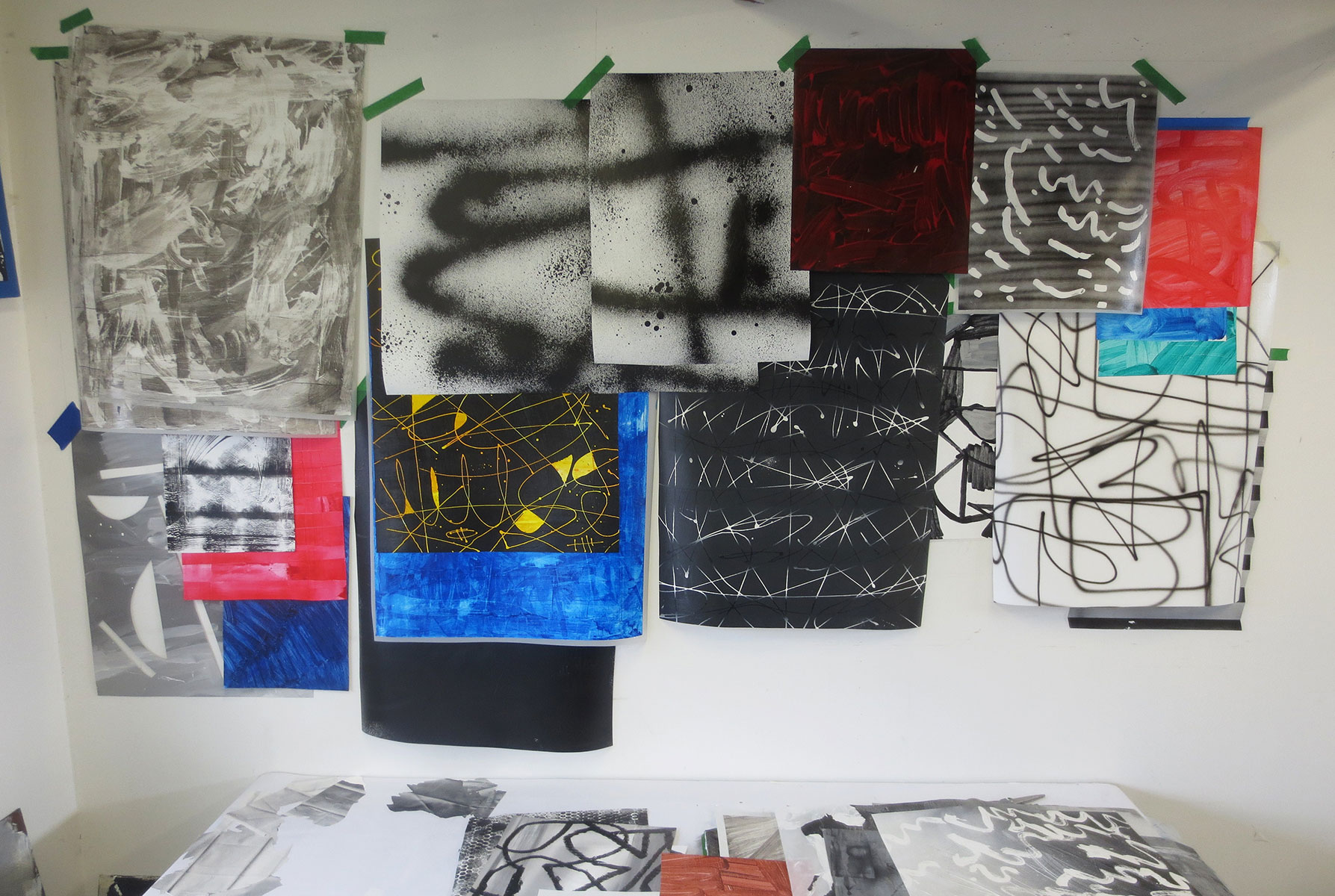
These are mylar sheets that I’m thinking of working with for the upcoming show. When you’re painting directly on a linen surface, you become more calculated, but mylar allows me to play around and not think as much about where the painting might end up. Some of these are acrylic on mylar, but there’s also spray paint and other mediums, and a variety of application tools used, from brushes to squeegees… anything that I can drag or spray or squirt around. Some of the techniques I use for applying pigment are more like types of printmaking … almost like monoprints or crude block prints. Visually, there may be some nods to earlier graphic design or art, but that’s not always intentional. It’s never, “Oh, I need a spray painted squiggle.” I’m just trying to push the paint as much as I can, and to think about different languages of painting. Once I have a huge collection of these painted sheets, I’ll group them by technique, tone, palette or texture. Then, I’ll use them to play with compositions. I’ll cut out pieces, move them across existing backgrounds, seeing how they relate to one another. Once I find successful compositions, I’ll adhere them. This method of working allows me to work out all the possibilities of what a painting could be, and not rely on sketches or guesswork. I don’t paint the sheets with any intention of composition or how they’ll be used later. Making the sheets is all about exploration. After they’re made I switch modes and become more formal and calculated.
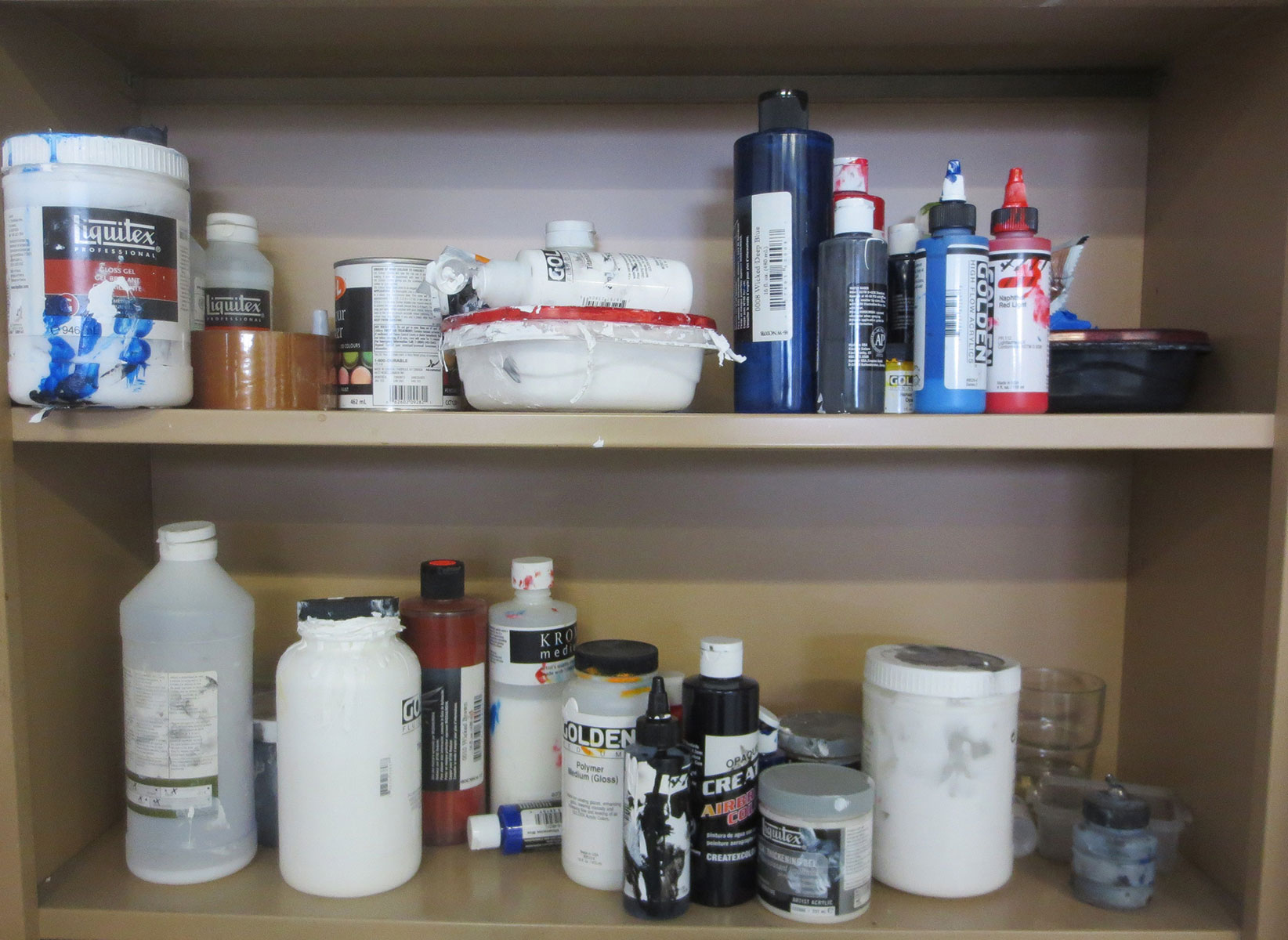
All of the materials on this shelf are taken on and off it regularly. I use a lot of mediums because I collage. I’ll often get my hands on a material and use it for what it’s not for as a way to set up a challenge for myself. Like, I’ll take airbrush paint that is meant to go into a sprayer but apply it using a brush instead. I kind of attribute my fumbling through materials to not having the most thorough and fundamental training in art. Plus, I get restless, or maybe I’m just impatient, so I don’t want to do things the ‘right’, more time-consuming way. Painting is just tricky in general. When I teach, the kids sometimes feel intimidated by painting, and I still do, too, sometimes. But, it feels like there is less at stake if I just go wild for a bit and not don’t stick to traditional methods of applying paint to a surface.
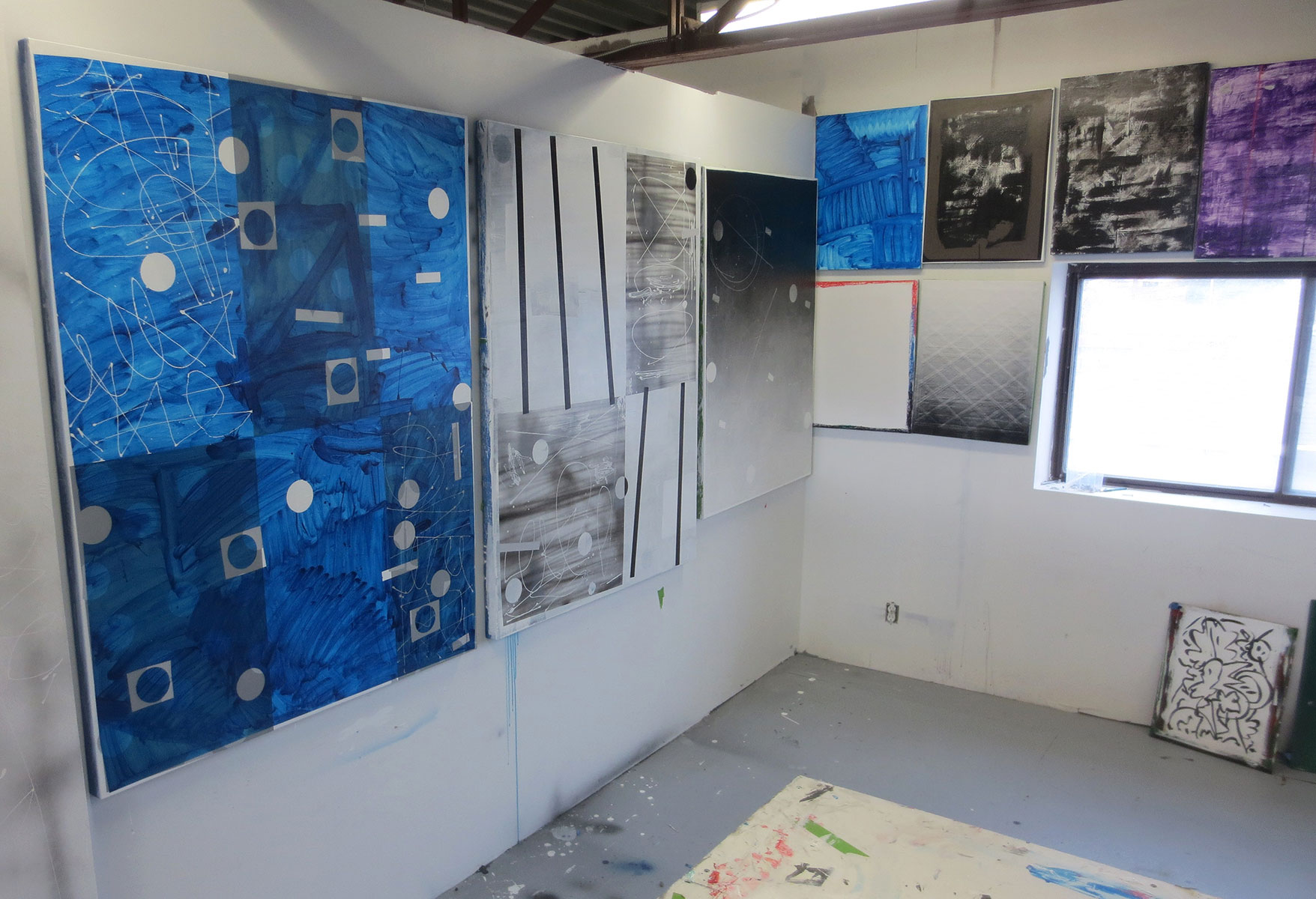
This is work for the upcoming show. It’s my first real “professional” show in Toronto, so I wanted to push myself. The smaller B&W and strictly collage works were going well, but I wanted the challenges of reintroducing colour and going up in scale. And, I wanted to get back to painting directly on a surface, in this case linen. Painting on a 4 x 5 foot piece of linen feels like more of a commitment. It forces me to slow down. What’s pictured here are primarily grounds that I’ll add forms on top of; they’re like arenas on which I arrange forms. The blue one is the furthest along; it will get some collage forms arranged on it and then I think it will be done. I’ve always found it easier to make a lot of work all at once, more than I’ll actually what to show. Some might not be successful and they won’t ever see the light of day. The editing is sometimes the hardest part. It feels great to return to this larger scale and paint with my whole body, to reach up to make marks, and to make large gestures. I’d restricted myself in the last couple of years in the smaller work, but now I’m expanding. There’s going to a bit less of the layering of the materials and forms, so I think this work will feel a bit quieter.
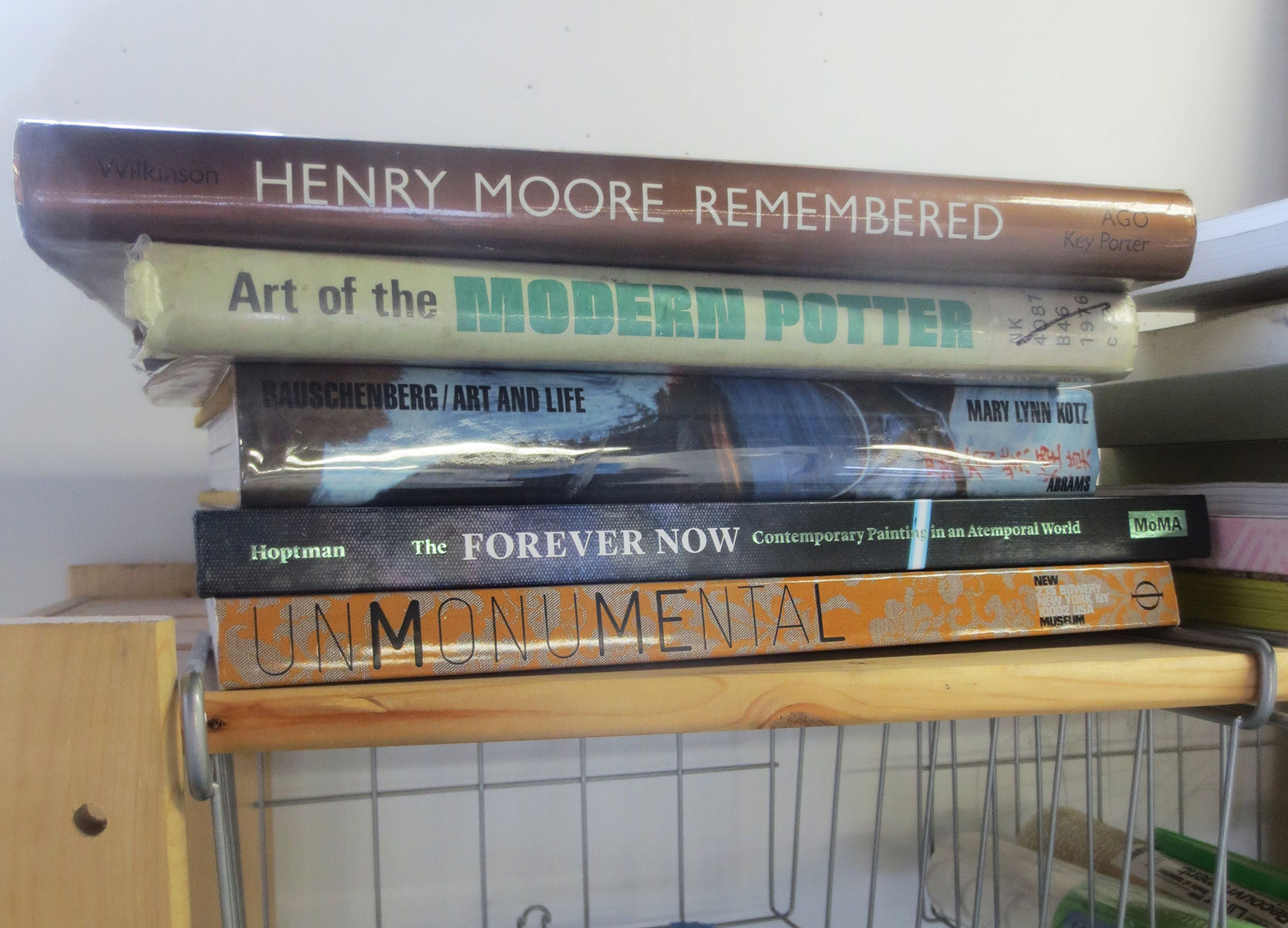
As painters, whether we like it or, we’re inundated with art history, and there are definitely other artists – past and current – who I admire. I love painters like Sky Glabush and Beth Stuart. I admire them for always evolving, not getting stuck in one mode of working. Stephen Andrews, too, had my favour show at the AGO this year. It was the first time I’ve cried in front of an artwork – his painting 10 x 01 – since Janet Cardiff’s 40-Part Motet. I enjoy crying in those situations now that I’m older… these feelings just happen but you don’t know why. I’m drawn to the sculptural forms in the Moore and the Art of the Modern Potter books pictured here, but also to how artworks are illustrated and documented in old books. The images are sometimes grainy, like photocopies or old slides. I’m trying to capture that haziness and mystery in some of the painted backgrounds of the new work. There’s something about this aesthetic that relates to my interest in personal history and memory. Rauschenberg has been a favourite since I was 16 or 17. At that age, I didn’t care about anything other than graffiti, but I had a great art teacher who gave me a Rauschenberg book that blew the lid off things. I thought that painting was stuffy, but here’s an artist splashing painting on a bed, making assemblages of scraps and taxidermy, putting a tire around a goat. Suddenly, I felt like I could do whatever I wanted. I think the idea of using materials unconventionally is what Rauschenberg’s art taught me.
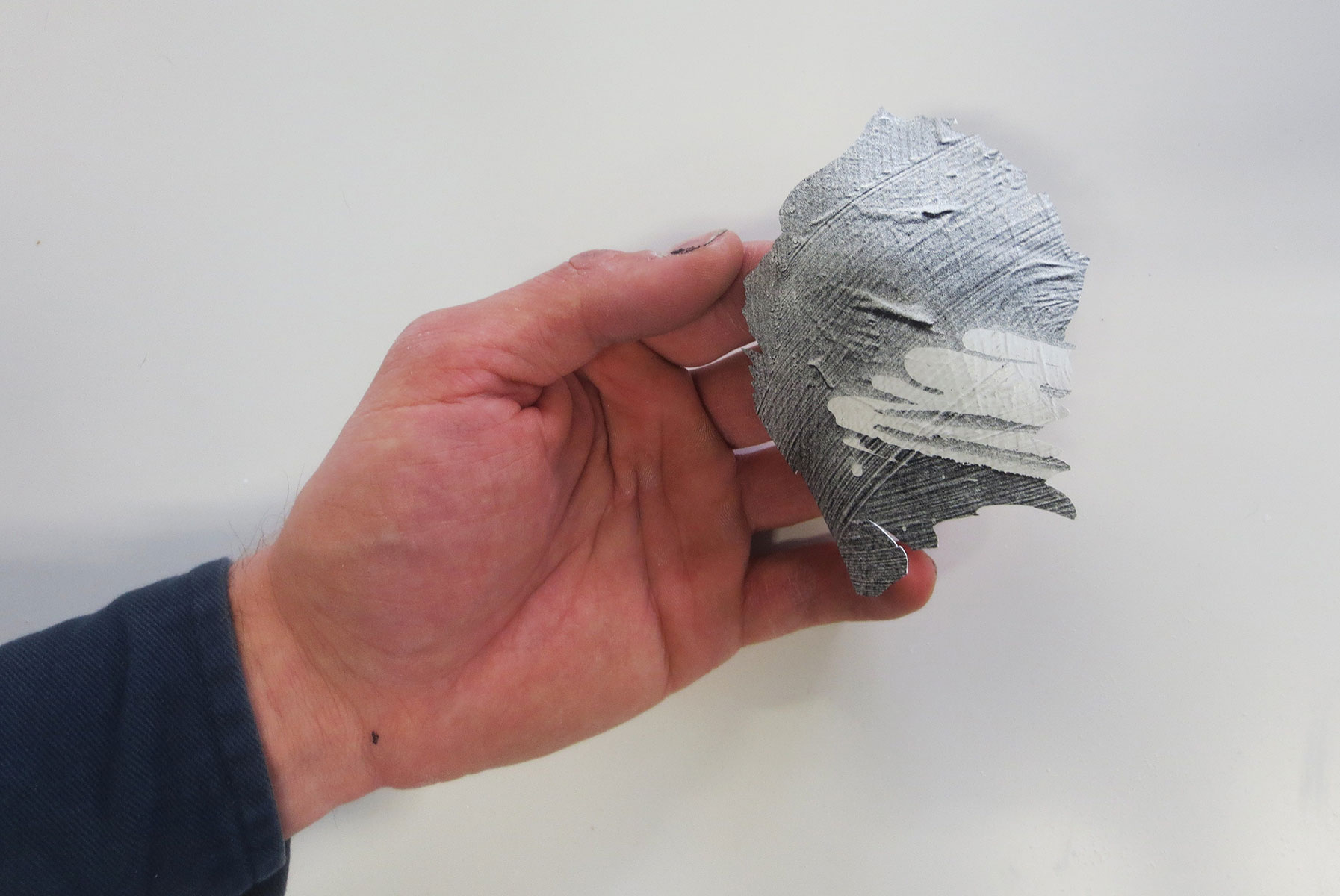
This is a little sample of acrylic paint that that I’ve torn from a larger sheet. By accident – I didn’t invent this method, I’m sure – I found a way to make flat sheets of acrylic paint. They’re like very thin, flexible sheets of linoleum or acrylic ‘skin’. It’s similar to the painting on mylar, but better in some ways. I like that it’s pure acrylic; there’s no mylar middleman. It’s more direct and painterly and less collage-like. I also like that it’s a bit unpredictable. When I’m cutting mylar, I can control the shape I create, but the acrylic behaves in its own way. I’ve started to tear it rather than cutting, so the tears will follow the ridges and crevices of the paint. Sometimes, I’ll make these sheets and people say they could just be paintings on their own. A lot of texture comes through even in this little piece. I think I’m trying to take all these fragmented materials and reorganize them in an attempt to convey a sense of presence versus absence; or recording actions, and capturing, organization and trying to hold on to little moments. I think this piece of acrylic embodies some of those ideas.
Jason Deary’s exhibition Roll Call opens on December 11 at Katharine Mulherin Contemporary Art Projects in Toronto, and runs until January 17, 2016.
Bill Clarke was the Executive Editor of Magenta Magazine Online from its inception in September 2009 until May 2017. His writing has been published in Modern Painters, Art Review, Canadian Art, Artnews and several other publications. In January 2017, he assumed the position of associate director at Angell Gallery in Toronto.



